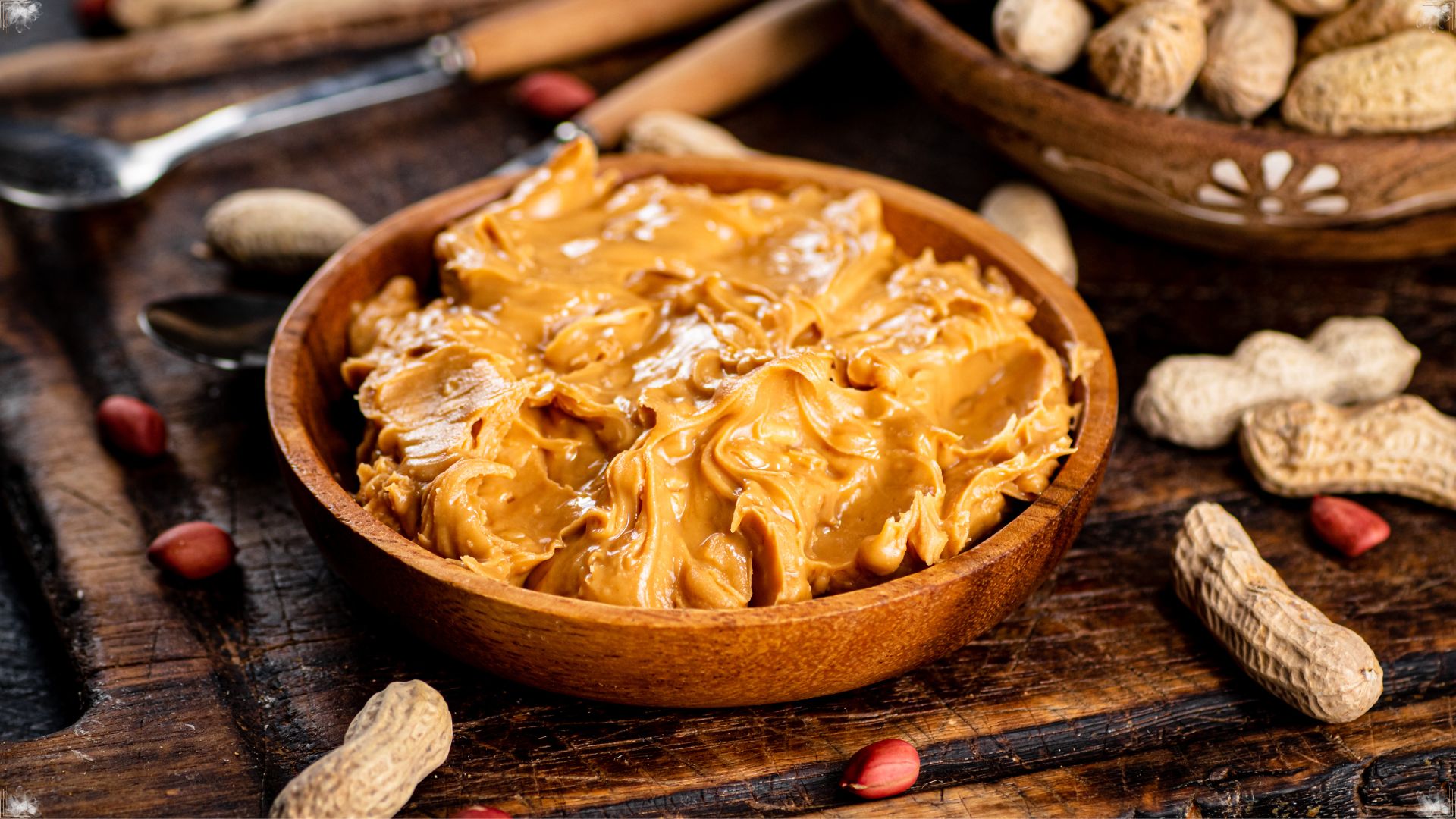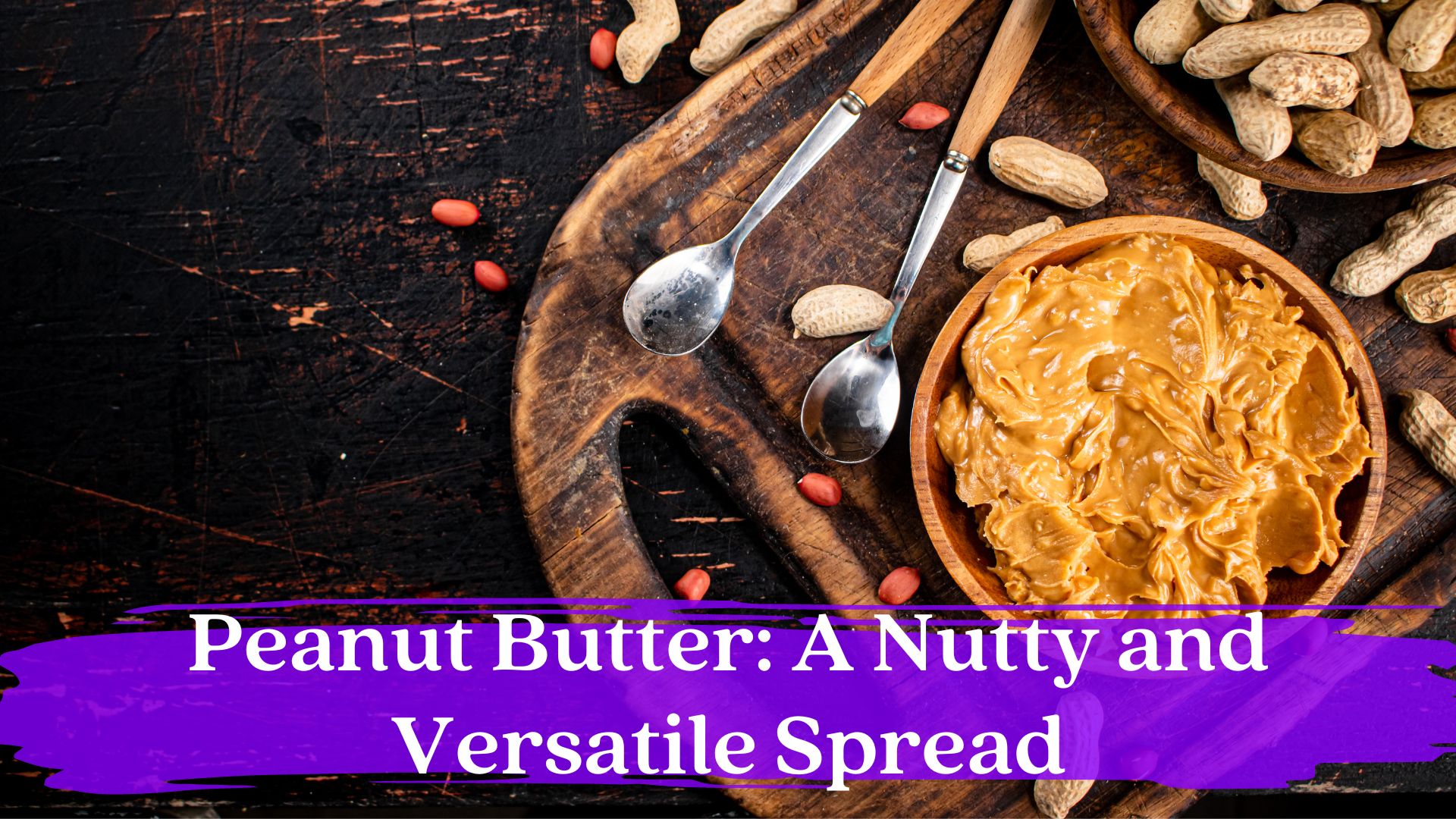Peanut Butter: A Nutty and Versatile Spread
Peanut butter is a beloved and versatile food item that has been a staple in many households for decades. Loved by children and adults alike, peanut butter is not only delicious but also packed with nutrients. In this article, we will explore the history,production process, nutritional benefits, and various culinary applications of peanut butter, highlighting its significance as a pantry essential.

I. The Origins and Evolution of Peanut Butter
- Historical background of peanuts
Peanuts have a long history that dates back to South America, where they were cultivated by indigenous cultures. They were later introduced to North America during the transatlantic slave trade and gained popularity as a crop.
- Invention and popularization of peanut butter
Dr. John Harvey Kellogg is credited with inventing peanut butter in the late 19th century as a nutritious protein source for patients in his sanitarium. The spread gained popularity and commercial production began in the early 20th century. If you want to find more information, you can visit the website at https://dixieshomecookin.org/
II. The Production Process of Peanut Butter
- Harvesting and processing peanuts
Peanuts are grown underground and are harvested when the plant matures. After harvesting, they are sorted, cleaned, and shelled to remove any debris or damaged nuts.
- Roasting and grinding peanuts
The peanuts are then roasted to enhance their flavor and develop their characteristic nuttiness. They can be dry roasted or roasted in oil. Once roasted, the peanuts are ground into a paste or butter-like consistency using various grinding methods, such as stone mills or high-speed processors.
- Additional ingredients and variations
To enhance the taste and texture of peanut butter, additional ingredients such as sweeteners (e.g., sugar, honey), salt, and oils may be added. Some variations include natural and organic peanut butter, which omit additives and preservatives.
III. Nutritional Benefits of Peanut Butter
- Protein and healthy fats
Peanut butter is an excellent source of plant-based protein, making it a valuable addition to vegetarian and vegan diets. It also contains healthy fats, including monounsaturated and polyunsaturated fats, which are beneficial for heart health.
- Vitamins and minerals
Peanut butter is rich in vitamin E, an antioxidant that helps protect cells from damage. It also provides essential minerals such as magnesium, potassium, and manganese, which are important for various bodily functions.
- Dietary fiber and energy
Peanut butter contains dietary fiber, which aids in digestion and helps maintain healthy bowel movements. It is also a calorie-dense food, providing a good source of energy.
IV. Culinary Applications of Peanut Butter
- Classic peanut butter sandwiches
Peanut butter sandwiches are a timeless favorite, often paired with jelly, honey, or sliced bananas. They can be enjoyed on various bread types, from white to whole wheat, and even used as a filling in grilled sandwiches.
- Peanut butter in baking
Peanut butter adds a rich and nutty flavor to baked goods such as cookies, brownies, and cakes. It can be used as an ingredient or as a filling, and it pairs well with chocolate, oats, and other ingredients.
- Savory dishes with peanut butter
Peanut butter is a key ingredient in savory dishes, particularly in Asian cuisine. It is used in Thai peanut sauces for stir-fries and noodles, and as a base for marinades or dressings in salads and satay dishes.
V. Peanut Butter in a Healthy Diet
- Peanut butter as a protein source
Peanut butter is a valuable source of protein, especially for individuals following vegetarian or vegan diets. It can be incorporated into meals and snacks to ensure an adequate protein intake.
- Managing fat content and sodium levels
While peanut butter contains healthy fats, it is important to consume it in moderation due to its caloric density. Choosing natural or low-sodium varieties can help manage fat and sodium intake.
VI. Peanut Butter and Allergies
- Peanut allergies and precautions
Peanut allergies are common and can cause severe allergic reactions. It is crucial to recognize symptoms and seek medical advice if allergic reactions occur after consuming peanut butter or other peanut-containing products.
- Cross-contamination and label reading
To avoid cross-contamination and potential allergen exposure, individuals with peanut allergies should carefully read food labels and choose brands that guarantee peanut-free production facilities. Alternative nut or seed butters can be used as substitutes.
FAQs about peanut butter
1. How did peanut butter become popular as a sandwich spread?
Peanut butter became popular as a sandwich spread due to its creamy texture, nutty flavor, and the perfect balance it creates with other ingredients like jelly or honey. Its convenience and versatility made it a go-to choice for sandwiches.
2. What are some creative ways to incorporate peanut butter into breakfast recipes?
There are numerous creative ways to incorporate peanut butter into breakfast recipes. You can spread it on toast or bagels, swirl it into oatmeal or yogurt, blend it into smoothies, or use it as a filling for pancakes or waffles.
3. Are there any health benefits specific to natural or organic peanut butter?
Natural or organic peanut butter is often preferred by health-conscious individuals because it typically contains fewer additives, preservatives, and added sugars. It offers the same nutritional benefits as regular peanut butter, such as protein and healthy fats.
4. Can peanut butter be a good source of protein for athletes and fitness enthusiasts?
Yes, peanut butter can be an excellent source of protein for athletes and fitness enthusiasts. It provides a combination of plant-based protein and healthy fats, making it a convenient and nutritious option for post-workout snacks or as an ingredient in protein-packed energy bars.
5. What are some alternative nut or seed butters for individuals with peanut allergies?
Individuals with peanut allergies can consider alternative nut or seed butters as substitutes. Popular options include almond butter, cashew butter, sunflower seed butter, or soy nut butter. These alternatives can offer a similar taste and texture to peanut butter.
6. Are there any regional variations or unique peanut butter dishes around the world?
Yes, there are regional variations and unique peanut butter dishes around the world. For example, in West Africa, peanut butter is a common ingredient in savory stews like groundnut soup. In some Asian cuisines, peanut butter is used in satay sauces or as a base for noodle dishes.
7. How does the taste and texture of homemade peanut butter differ from store-bought versions?
Homemade peanut butter often has a more pronounced and intense peanut flavor compared to store-bought versions. It can also have a slightly different texture, depending on the grinding method used and the amount of oil added. Some people enjoy the freshness and control over ingredients that homemade peanut butter provides.
Conclusion
Peanut butter, with its rich history, production process, nutritional benefits, and versatile culinary applications, has become a beloved and pantry staple. Whether enjoyed on sandwiches, incorporated into baking recipes, or used in savory dishes, peanut butter offers a delicious and nutrient-packed option. By understanding its origins, production process, and various culinary uses, individuals can fully appreciate the versatility and benefits of this nutty spread. However, it is essential to consume peanut butter in moderation and be mindful of allergies and dietary restrictions. With proper knowledge and precautions, peanut butter can be enjoyed as a delicious and nutritious addition to a well-balanced diet.
